Abstract
Change management in the era of digital transformation is a critical need for any company. Companies must adapt to the pace of external market change to maintain competitive advantage, increase profits, and increase customer base. Lack of such adaptability leads to loss of customer trust and, as a result, reduced competitiveness. Digital transformation is ongoing and refers to a radical change in the company on the way to optimization. Automation, robotization, and digitalization are just three examples of large-scale company transformations these days. However, not all executives can keep up with this pace, resulting in the loss of the commercial attractiveness of the company. This dissertation reveals the essence of change management theory in the digital age and offers universal recommendations for bridging the gap discussed.
Introduction
One of the most dynamic spheres of human life is socio-economic. State communities maintain a steady tendency to progress in the context of the current time, modernizing economic and social development within the country. Although the rate of such development differs for each social system, it is difficult to deny the general growth in a broad view (Remeikienė et al., 2020). It is noteworthy that one of the most striking manifestations of the socio-economic environment is business. In general, a business should be perceived as a form of human professional activity, which allows an individual to obtain financial means for existence and cover the need for creative realization (de Vasconcellos et al., 2019). Business as a form of socio-economic activity of communities is of critical importance and must be adequately supported by both state regulation and social recognition. The emergence of business should be seen as an evolutionary response to the growing needs of the individual. Attention to the forms of the most popular commercial activity in recent years actively supports this argument. Given the global introduction of severe social constraints triggered by the serious COVID-19 pandemic, one of the most popular business formats has been delivery services: food, non-food items, or services (McKibbin and Fernando, 2020; Mehrolia et al., 2021). Another illustrative example can be considered the emergence of private schools and universities that receive funding not from the state but students, investors, and prize funds. The emergence of such business forms was catalyzed by society’s deep frustration with the aging systems of public education and the search for worthy alternatives. These examples are excellent evidence of a business’s social and economic importance as a form of professional activity. The exercise of commercial services is inextricably linked to social demands and is necessarily combined with the general agenda.
Based on the above, an important conclusion for this dissertation can be drawn about the general dynamism of the business industry. Commercial activity is obliged to be adaptive and complexly evolving to correspond to the demands of the time clearly and not lose relevance. In turn, this property is necessary to maintain high competitiveness in a rapidly changing market. So, companies in the market of 2021, providing services for the sale of typewriters, can hardly compete effectively with companies selling laptops and computers. It is the competitive ability of business managers to consider the context of the time and respond to social demand in the right way that increases the company’s chances for rapid professional growth. At the core of these properties was a methodological concept called change management (Galli, 2018). Change management ensures that a company that has embodied rapid response strategies and changes in organizational structures will maintain competitiveness in the market and achieve a practical advantage over other companies in the industry market. The implication of this definition recognizes the criticality of organizational change management for any company because, in the absence of this methodology, there is a problem of loss of commercial relevance and the transition of the customer base to a more customer-focused, modern business.
Change management in a company emerged as a natural business need to adapt to a changing environment. There are several critical reasons for the importance of such management. First, the need to keep up with changes in the external environment is critical to business. For example, once a market leader, Nokia failed to remain competitive and left the top position (Khan et al., 2017). Second, change management allows one to realize the cross-functionality of the whole enterprise and ensure its harmonious integrity. With such a methodology, there is a need for interaction between the company’s different departments, which increases the chances of efficiency. Third, if a company is about to make a significant transition, whether rebranding or a change in a market niche, prior organizational change management practices create a solid foundation for the safest transition with minimal losses (Galli, 2018). An important reason is a significant increase in productivity and performance that occurs when aspects of transformation management are embodied (New York Pugi, 2018; Prosci, 2020; Christopher, 2017). Finally, the fifth factor for the significance of the methodology discussed is the tendency to involve employees and their opinions in operational processes. Since the essence of change management involves a plurality of views, employee engagement and motivation are significantly increased (Flemming, 2020). This practice is essential for any company, as its implementation brings apparent benefits for business regardless of the professional sphere.
Change management as a general methodological idea emerged a long time ago, although no one can give an exact date of its emergence. Nevertheless, in the digital era, organizational management has reached unprecedented relevance due to the intensification of the pace of qualitative and quantitative changes in the market. With the advent of the Internet and global networks connecting nations, cultures, and companies, the competition for customers and profits has become even more serious and chaotic (Essling et al., 2017; Hanna, 2018). Change management is the organizational tool that helps a company remain structured and systematic despite a rapidly changing marketplace. The structure of managing this change itself has undergone a metamorphosis. One of the most striking manifestations of change management in the digital age is becoming digital transformation. The central core of this term corresponds to a significant restructuring of commercial management and transformation of the business system through the adoption of digital strategies and management approaches. More companies are turning to automated systems to collect and process commercially essential data and are abandoning routine manual labor due to its imperfection compared to the operation of robotic systems. This is not to say that automation necessarily leads to fewer jobs as a new form of change management. Although some of the changes in labor-management discussed in this dissertation are permitted, the general course is toward a transformation of the operational structure that uniquely combines manual and machine labor.
Purpose of the dissertation
This dissertation’s central purpose is to define the theoretical concept of change management in the era of digital transformation and examine international management experience on the effectiveness of change management in following the growing pace of the digital age.
Objectives addressed in the dissertation work
- To gather and select academic studies that meet the topic of this paper and meet the primary filtering criteria.
- To conduct a comprehensive literature review to outline the theoretical framework of change management as a methodology and change management as a form of organizational necessity in the digital age.
- To include a theoretical assessment of digital transformation and its practical applicability to the real market.
- To summarize the international experience of digital change management and trace trends among leaders and anti-leaders in this area.
- To obtain and discuss the findings concerning transforming change management in the digital age.
- To assess the degree of alignment between change management methodology and the pace of digital market transformation.
- Based on the results, to create a pool of universal recommendations that will be effective for any company, regardless of the vector of professional activity.
Literary review
The essence of business
Business and entrepreneurial activity were not characteristic of the everyday life of primitive man. On the contrary, the business became a reflection of evolutionary progress in human development due to the emergence of complex socio-economic constructs. When relations between individuals began to be trade-monetary, the understanding emerged that individual community members could enrich themselves by covering social demands and demands with their supply (Aubakirov and Adayeva, 2021). Although the business has been significantly transformed since then under the pressure of time and increased competition, the general essence of business systems has remained unchanged. This goal is made possible through strategies to integrate material, social, informational, industrial, and financial resources to ensure the highly efficient production of goods or services intended for further sale to customers or on a b2b vector.
Determining the driving forces that cause individuals to realize business has high methodological potential for a deeper understanding of economic systems. By now, several views on this have emerged within the author community. The primary factor is the desire to earn large sums of money, which cannot be obtained through standard work in companies (Urevig, 2021). Second, a critical driving force for many people is the desire to develop a product that has not been previously marketed or whose quality does not meet expectations (El Shoubaki et al., 2019). Often, this decision requires relying on the current market agenda to make comparisons and draw conclusions. Third, economic awareness, the desire to prove oneself as an entrepreneur and create jobs are significant predictors of the emergence of business companies (El Shoubaki et al., 2019). In addition, many authors point to the natural human desire to achieve high performance and take pride in it (Johnson et al., 2018; El Shoubaki et al., 2019; Urevig, 2021). Related to this is the desire to take risks inherent in proactive leaders: risk, in general, is an inherent feature of any business activity (Johnson et al., 2018). It is appropriate to state that it is through business that humanity has new economic goods, whether it is a modern electronic device or basic survival food. The entrepreneurial industry accumulates society’s enormous intellectual potential, introducing young skilled workers to tasks and providing inexperienced workers with proper training (Golovchanskaya et al., 2018). According to Heyward (2020) and Sukoharsono et al. (2020), an effective business cannot exist without social influence, which is expressed not only in creating jobs and enabling local people to fulfill themselves professionally but in providing vulnerable groups with dignified support. This is especially evident for multinational companies — such as Apple, Google, or McDonald’s — which host large charitable foundations each year and openly declare their support for minorities (Hwang, 2019; Minevich, 2021). Muller (2021) and Mohamed (2020) disagree, showing the lack of need for companies to address social welfare issues. Regardless of the views, however, it is correct to summarize that the general functional roles of business for the modern marketplace are multiple and cannot be reduced to unambiguous theses.
Ideas peculiar to a specific time and geographical location may not be relevant for other communities. This perfectly natural mechanism allows social groups to develop according to their pace and skill specific (Remeikienė et al., 2020). It follows that the business industry evolves: companies find themselves under pressure from socio-economic and political driving forces, which cannot remain conservative for a long time (Aubakirov and Adayeva, 2021). Organizations can resist change, but if they do, they risk losing relevance to the current agenda, as has been shown by Khan et al. (2017). Maintaining relevance is fundamental to any business interested in increasing capital. However, this mission is directly related to the existence of competition. Suffice it to imagine a company carrying out professional activities in the absence of any competing forces: in this sense, it seems evident that due to the lack of market supply, the consumer will not be able to refuse the services of this company. The expensive food in airports and movie theaters is an excellent confirmation of this assertion (Crockett, 2019). Realizing that individuals cannot make other choices, managers of such organizations significantly inflate prices.
While it may seem to an individual business executive that competition in the marketplace is disruptive to profits, one may recall the above example of airport food, in reality, it is not. Essling et al. (2017) talk about competition as an essential driver of economic growth, whether locally or globally. Competition differentiates market power and avoids dangerous monopolistic phenomena that threaten the quality of supply. Competitive economic forces catalyze the development of scientific and technological progress through the systematic encouragement of entrepreneurial investment in innovative products, the use of more modern technology, and the optimization of inventory management, as World Bank (2018) writes. Consequently, inefficient economic production, obsolete technology, low-quality or irrelevant goods disappear in competition.
Change management
The methodological discussion of change management is systematic since the term defines an essential component of a company’s organizational health. In this context, it is essential to recognize that change management is a private practice of general management of an enterprise, but the former has unique features that are not peculiar to general management. The question of the terminological definition of this concept does not find a single answer in the academic field. For example, Perkins (2018) describes change management as ensuring that any change is accepted by the people, meaning employees, affected by the problem. Ahmad et al. (2017) have a broader view when describing the process as an approach to move a company smoothly into the future state by paying careful attention to individual aspects of change. Wen-Jun (2019) perceives change management as a form of organizational resistance to external threats by effectively holding and processing them. The most novel views expressed by Varon (2021) are primarily consistent with Ahmad et al. (2017): the author writes that change management is a series of tasks that allow a smooth transition from the current agenda to the future while minimizing risks. Thus, with four different perspectives, one can generally summarize that change management is a critical element of organizational management, which allows the company to realize professional development with minimal threats. It is a characteristic of a successful company in a dynamic and unpredictable market
Academic and public interest
There is no exact time frame for the emergence of change management as a methodological concept. Since the phenomenon is evolutionary, one can extrapolate that change management as an idea that existed long ago. Industrial era companies were under competitive pressure and always had to react quickly to any external and internal changes to remain relevant (Aubakirov and Adayeva, 2021). Such management was intuitive because no particular methodology had yet been developed. Therefore, entrepreneurs were forced to use personal experience and prediction based on subjective beliefs instead of the automated calculations inherent in the current agenda. The academic study of change management has gained urgency relatively recently. By now, there are more than 612,000 scientific publications in the Web of Science database that have studied change management. The Google Scholar digital database reflects more than 5.5 million topical papers. Reference to Figure 1 clearly shows that the number of publications on change management has grown exponentially and has increased significantly since the 1980s. In all likelihood, this jump can be attributed to the spread of computer technology, which radically changed the structure of operational efficiency. It is a mistake to think that the academic community is interested in studying this problem only in management sciences. Figure 2 nicely demonstrates the opposite situation: many publications are written in the thematic categories of environmental science, ecology, engineering, and computer science. From this, one can conclude that this phenomenon has a wide acceptance by the academic community interested in in-depth research on this issue.
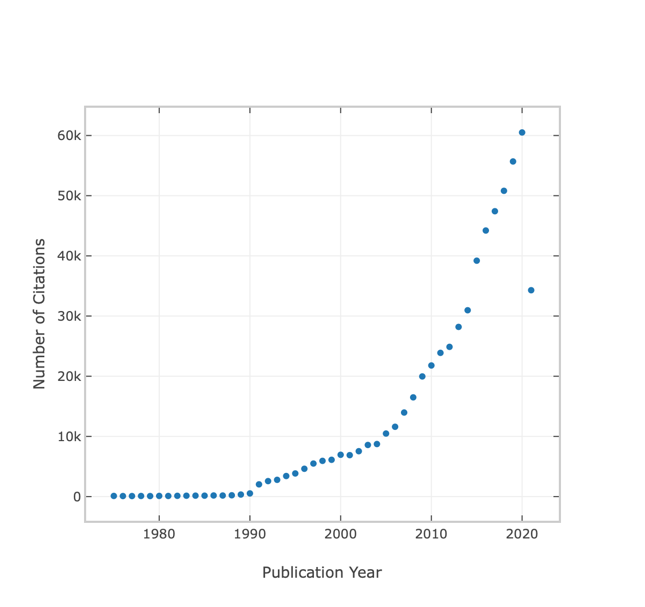
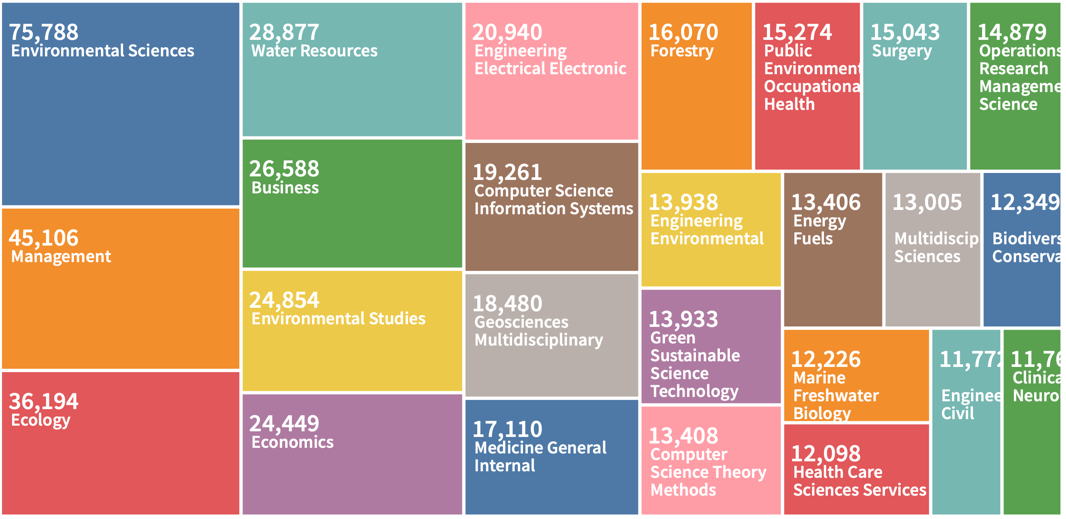
It is interesting to note that the public interest in process management has a slightly different trend. From Figure 3, one can see that the number of Google queries for the phrase “change management” has slowly declined over the past eighteen years. However, it should be emphasized upfront that these results do not imply a dramatic decrease in interest in change management among ordinary users. With the widespread development of digital technologies, the number of platforms where users can search for information has changed, or the topic in question does not require repeated study, and a one-time study is enough.
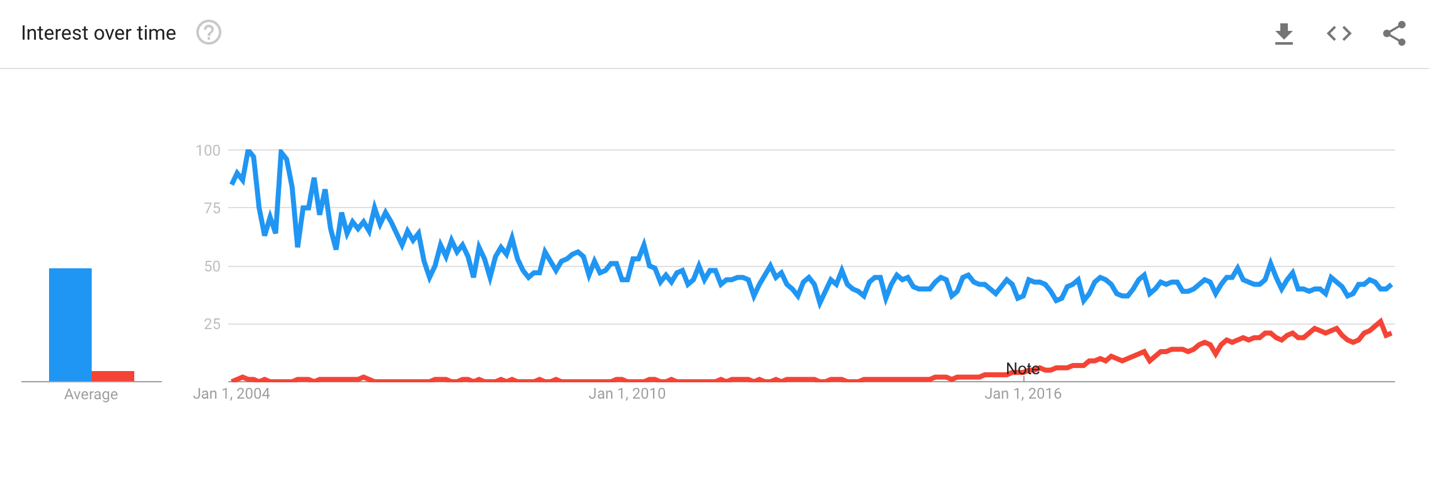
Characteristics of change management
An important feature of change management is the fixation of the result. If, as a rule, the enterprise’s response to an external or internal threat is temporary in nature, then change management is aimed at a general shift of the vector of organizational development for a long time (Christopher, 2017). In this regard, it is particularly relevant to recall Levin’s theory of change management, which involves freezing projects to identify critical points in order to adjust the vector of further development (Hussain et al., 2018). To implement this task, change management focuses on changing the perception of the enterprise, its values or processes, and the problems in the minds of stakeholders. Such practices are accomplished through training tools and adequate advocacy for change to the extent that employees become aware of the need for change as a whole. Changing the logo, slogan, and vision are significant transformations in terms of corporate culture, and endorsement of these changes has critical value for the company. In this context, it is essential to emphasize that approval is not perceived as blindly following managers’ instructions but as supporting the idea of transformation, which fits perfectly with the ideology of pluralism of opinion, which is valid for change management (Flemming, 2020). This correlates with nudge theory as ideas that employees will change in directions that are discreetly initiated by leaders (Ebert and Freibichler, 2017). Paradoxically, when managing change, organizational leaders often try to maintain stability in the company. However, stability in most cases means preserving the organizational core, which does not contradict the ideas of change.
Change management becomes impossible without recognizing speed from three perspectives. First, the speed of business transformation largely determines a company’s competitive advantage. If a manager cannot follow the pace of the market (Figure 4), it creates a gap between theoretical expectation and reality that tends to widen as the commercial activity progresses. On the other hand, it is the speed of response to crises occurring externally. For example, a competitor company releases an exposé video about the firm in question and accuses it of illegally collecting personal data, then the company’s speed of response ultimately determines its ability to keep the relevance. A great real-world example is the recent news that Apple will analyze images on users’ iPhones for child abuse using machine learning (Nicas, 2021). This news expectedly caused a public outcry, as it raises issues such as private access and privacy. Just days later, the company released a broad overview of the proposed technology, explaining its implementation strategies in detail and reassuring users (Varia, 2021). This example perfectly validates the idea of reflective speed as an aspect of change management. Finally, the third type of speed that change management leaders should pay attention to is ensuring an uninterrupted flow of interactions with customers and suppliers. Any delays and problems associated with the implementation of commercial services, delayed delivery of a paid online item, lead to organizational trust and reputation problems (Newman, 2021). Thus, an essential aspect of change management is speed since change itself is a phenomenon that has a temporal characteristic.
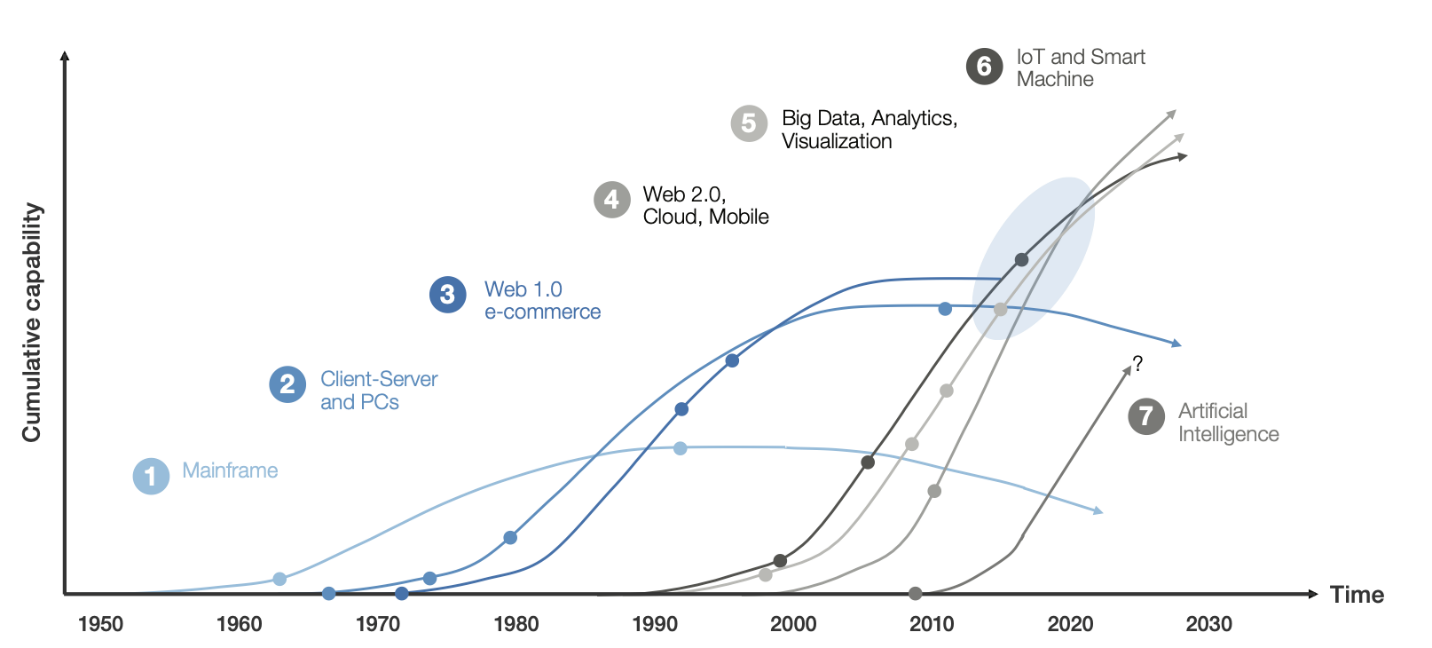
Digital transformation
One manifestation of the digital economy, the new century economy based on the deep integration of computer technology, is digital transformation. This term, like change management, has no limited context and is therefore interpreted differently by authors. Hicks (2019), for example, points to the replacement of obsolete technical equipment with more modernized, improved, and optimized tools. Schwertner (2017) looks at the other side of transformation, pointing out that its uniqueness lies in the cultural acceptance of risk as necessary for change. They are not contradicted by Mugge et al. (2020), who clarified that digital transformation affects all industries worldwide. In this context, it is fascinating to refer to Figure 5, which shows that the study of digital transformation comes from engineering and computer science, telecommunications, optical and economic sciences, and business. Taking the above into account, it is possible to arrive at a generalized definition: digital transformation is the integration of digital, computerized, technologies in the production economy to automate and optimize.
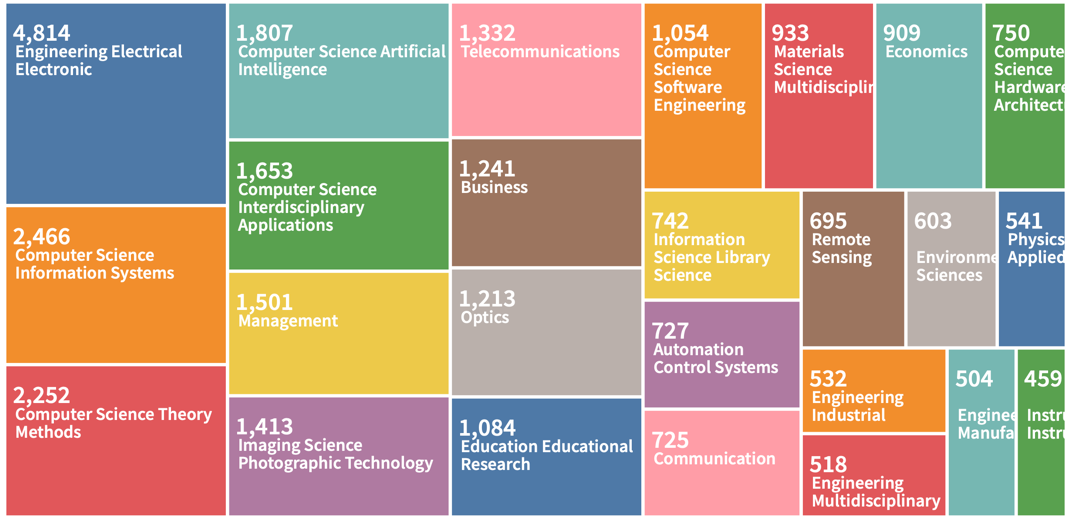
In advance, it should be stated that the above generalization does not mean only a technological approach to management. Thus, digital transformation is not a process of evolution of information systems in the company, including only the expansion of the development team. Instead, digital transformation seeks to modernize approaches to managing communications, corporate culture, and operational efficiency to achieve the desired professional goals (Vial, 2019). This transformation aims primarily to optimize labor productivity for a smoother delivery of goods or services to the end consumer. Consumers can be not only the company’s customers, although they constitute the bulk of the business, but suppliers, investors, and other parties interested in improving business processes. In this regard, it is advisable to quote a broad study by Conti-Brown and Wishnick (2020), which stated that the maximum output from the digital transformation is possible only in the case of a conscious rejection of conservative management models that contradict the ideology of optimization. The search for specific tools that allow the transformation in practice, in general, occupies a special place in the public study. Revisiting Figure 3 shows a weakly linear increase in Google queries for this key. More people seem to be realizing that it is not enough to have a working website, brand social media accounts, and YouTube channels to meet the standards of digital transformation. On the contrary, the professional success of digital transformation in a company is based on the competent establishment of an organizational strategy and the proper management of change in all areas of the company’s work activities (Vial, 2019). In this context, it is imperative to emphasize the need for integrative integrity of the company in contrast to its fragmentation and fragmentation as separate departments: only in this way is the interconnectedness of corporate culture and efficiency from the implementation of transformative processes achieved.
The multiplicity of manifestations of digital transformation for the company requires a separate discussion. Since it has already been shown that the term corresponds to a multi-vector process of organizational change, it is legitimate to expect that digital transformation can be achieved through several vectors: it is about customer experience, business process, and operational efficiency (Kane, 2017). Improving the customer experience through digital aims to improve the interaction between the brand and current customers and potential ones. In addition to the apparent direction of marketing through print publications and city billboards, this includes using social media and the website to increase customer touchpoints. However, the best strategy is cross-platforming, which puts the potential customer in the sales funnel through the harmonious use of all available digital media (Moriuchi, 2021). Moreover, technology in this context allows portraits of the average customer and the customization of targeted recommendations for their preferences, which increases consumer brand loyalty. Such manifestations of digital transformation are critical to enhancing a company’s competitiveness, especially in stressed market sectors.
Operational performance transformations are a must for organizational change. Primarily, this refers to partial or complete automation of internal processes, allowing a significant increase in enterprise productivity (Raj and Seamans, 2018). Automation as a trend should not be considered only in the use of software to facilitate the work performed by employees. On the contrary, the computerization of production has a high potential to improve corporate structures through predictive tools, communication, and the collection of key performance metrics. Commercial solutions exist in industry markets that allow for statistical regression analysis of organizational data to create predictive modeling (Raj and Seamans, 2018). Using this data, decision-makers can adjust the current business agenda or make radical new corporate decisions. Automated collection of key performance metrics simplifies the work of a corporation’s HR department and ultimately allows for optimized resource management to achieve the most favorable economic benefits.
Finally, an essential aspect of digital transformation is the change in company business models. With the introduction of information technology into working practices, the commercial offerings of products and services are expanding (Raj and Seamans, 2018). Practice shows that companies previously investing only in the development of physical products are significantly restructuring their business processes, including enterprise-wide corporate goals, with the progress of digital transformation (Shirer, 2020). Such reasoning refers to the expansion of the geography of consumers. For example, in an offline clothing store, sales could only be made locally to the local market, whereas the digital transformation allows the full use of social media and other web-based platforms to find customers all over the planet. This phenomenon underlies the emergence of transnational online stores — more specifically, aggregators that present a platform for retailers or wholesalers — including Amazon, Ozon, Aliexpress, Wildberries, and other major online marketplaces.
It is acceptable to turn to the example of the real company Netflix. The company’s initial commercial path, namely the sale of DVDs, has transformed over time due to understanding market trends. In 2007, Netflix began to work with streaming video, introducing to the world a digital platform that takes into account the personal interests of the user, and later the company began to produce its video content (Rataul et al., 2018). As a result, Netflix has grown from a little-known company to a major media giant with a combined audience of more than 207 million users (Stoll, 2021). This example perfectly illustrates how a company with the anticipation and drive for change has effectively transformed itself with digital technology by completely restructuring its organizational system.
Aspects of digital transformation
A central feature of digital transformation is the pursuit of innovation and the professional ability to take risks. Experiments with technology, based on deep calculations or intuitive leadership management, constitute the core of digital transformation (Vial, 2019). In general, it is worth noting that it is impossible to implement any change associated with business management without the potential for risk: the process of moving from the current state to the desired point in the future is always inextricably linked to the threats and delays that may arise in the transition. Thus, digital transformation as an extended process is interested not so much in discussing initial and final organizational states but the nature of the path from point A to point B. As Sharma and Kurien (2017) have shown, change in the marketplace occurs in leaps and bounds, which means that influential executives should consider the essence of external economic drivers to manage transformation intelligently and smoothly.
Notably, measuring digital transformation as a process is difficult because of the unpredictable nature of technology development. General trends for the next few years are the subject of forecasting by influential executives and are used to adjust the course of the enterprise, but it is not known precisely what changes await the digital economy in five, ten, and fifteen years. This raises an obvious measurement problem: no objective tools can reliably determine the extent of digital transformation in a company. On the other hand, it is acceptable to identify three key aspects that perfectly characterize the current pace of digital transformation for the current level of general civilizational development.
First, it is the emergence of qualitatively new forms of technology that did not exist just a few years ago. The observed growth of digital technologies attracts private and public investors for their development, which creates a balanced cycle of cause and effect. The emergence of such forms of digitalization as virtual reality, blockchain, cryptocurrency, machine learning, and artificial intelligence has enabled specific applications (Vial, 2019; Ghimire et al., 2020). Notably, the emergence of such digital technologies is very much tied to the current agenda, particularly during the COVID-19 pandemic (McKibbin and Fernando, 2020). The forced need for social isolation has significantly impacted such IT market industries primarily related to mobile and remote technology. According to McKinsey (2020), businesses have been forced to accelerate their digitalization and customer communication processes by an average of 3-4 years to keep up with the agenda. IMB (2020) provides slightly different data: they estimate that companies have accelerated their digital transformation by an average of 5.3 years. Awareness of the viability of such technologies and the potential of optimizing the economy with them makes interest in them justified.
As a continuation of investment in new generation technologies, there is increased consumer demand. The percentage of the total population of electronic technology users is steadily increasing, which means more people are becoming digitized (Vial, 2019). This cannot be ignored in enterprise economics because consumers are gradually becoming accustomed to using social media, contactless smartphone payment, and communicating with advisors in the context of virtual platforms. As a result, a company’s lack of support for such forms can cause a sharp decline in customer trust and loss of commercial appeal.
The third important feature of digital transformation is the accelerated rate at which new technologies emerge. This phenomenon is perfectly observable in retrospect: while more than thirty years passed between the appearance of the first computer and the Internet, ordinary users learn about the emergence of biometric reading technologies only a few years before the concept is released. In addition, models of perfect quantum computers, robotic assistance dogs, powerful 3D printers for organ skeleton printing, and neurochips to help physically disabled individuals are already being discussed and will most likely reach the mass market within the next five years. By 2025, the digital transformation market is expected to reach the $1009.8 billion mark, equating to nearly double the value of 2020 (Wood, 2020). Notably, data from the World Economic Forum showed profitability of $100 trillion over the next decade with continued growth in digital transformation. That said, a reference to Figure 6 shows that the most exposed macroeconomy industry will prove to be customer-centric, which fully confirms the results of WEF (2016). Thus, the world is accelerating exponentially, and the lifecycle of technology is rapidly shortening.
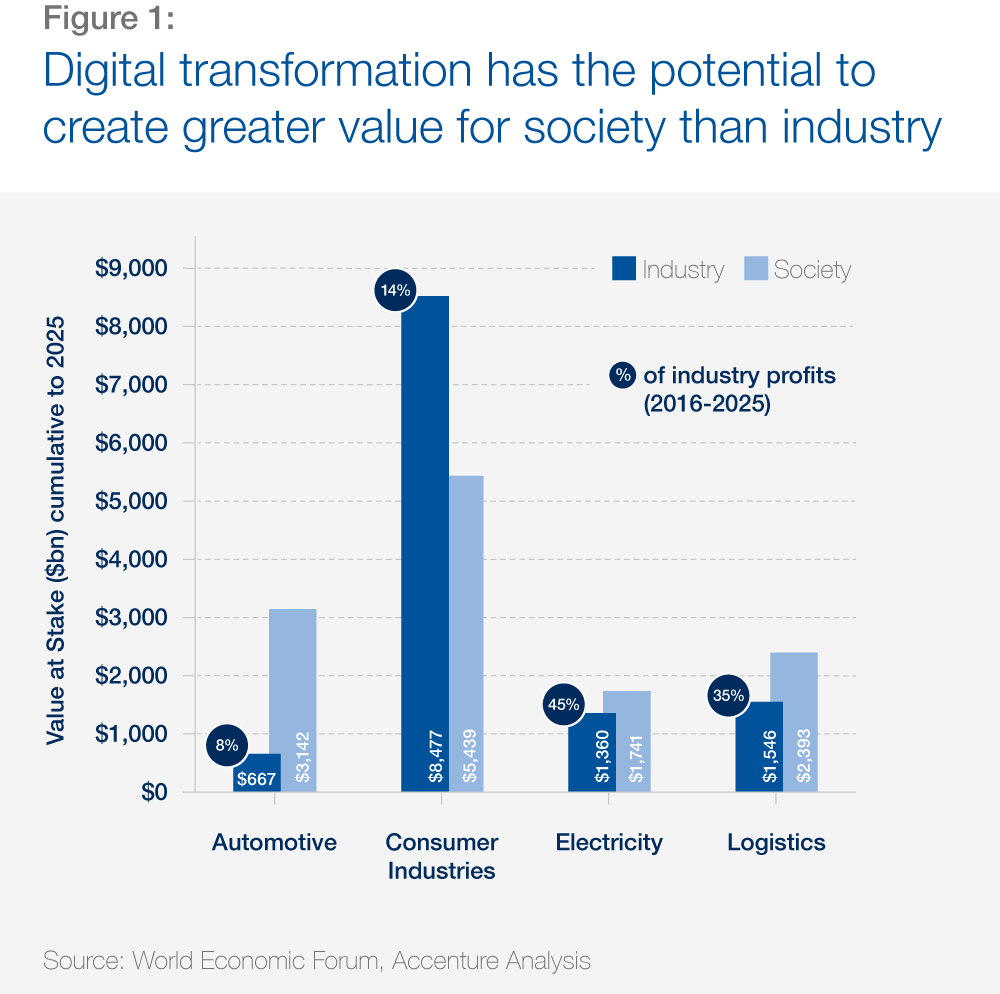
Benefits of digital transformation
It is necessary to academically outline the framework of benefits that companies receive when they implement a culture of digital transformation. One of the main benefits, according to Figure 7, is the increase in operational efficiency that PTC (2020) writes about. Understanding this type of efficiency as achieving the best ratio between the resources involved and the results of operations makes it difficult to understand exactly how digital transformation maximizes this, namely through the deep integration of computer technology. Furthermore, companies based on extensive data management, which reflects one branch of the digital transformation complex, outperform their competitors in customer engagement by 23 times (Gaskell, 2016). Expanding the commercial offerings for the enterprise is an unobvious advantage (Shirer, 2020). For example, the release of new software in a car manufacturing company allows the company to launch a remote vehicle maintenance tracking program and offer a timely service package to the driver. From this comes the possibility of more accurate and sensitive analytics, allowing more profound analysis of customer preferences and building a specific communication strategy with them. For example, a customer record in the database as without a car will not be offered a repair service, which prevents customer loyalty to the company from decreasing. In addition, digital transformation leads to denser customer interactions, including electronic service evaluation options, social surveys, and targeted advertising (Vial, 2019). Using the data they collect, companies are building a vector for their development.
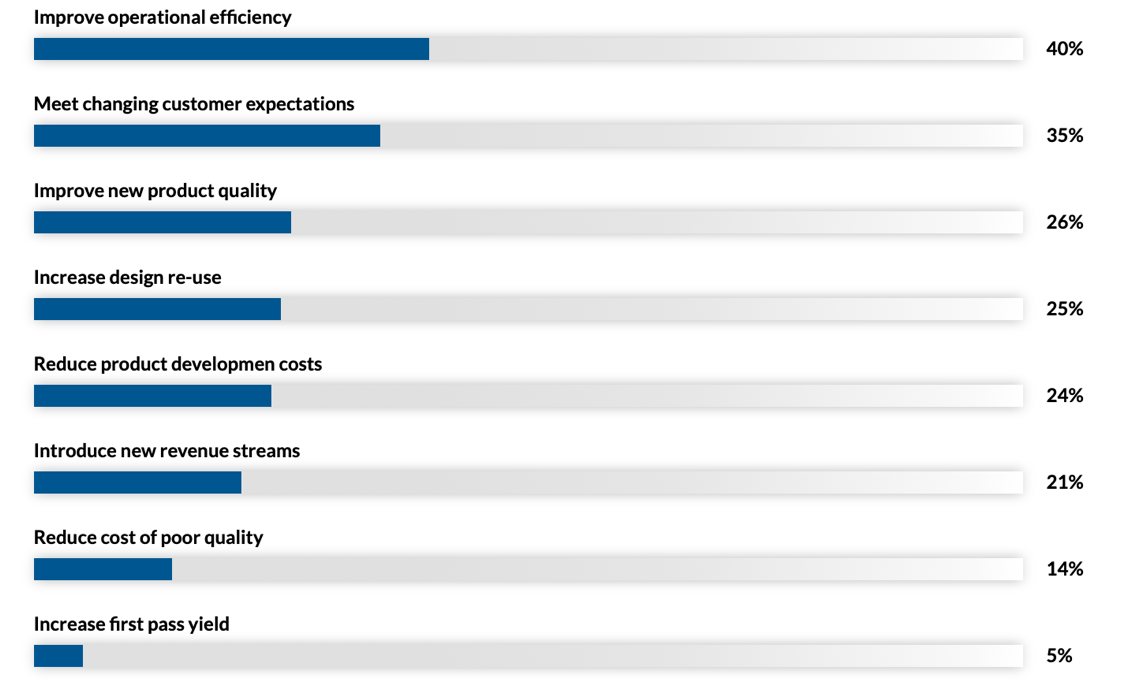
Threats of digital transformation
To deny the need for change management in an era of digital transformation seems an unacceptable practice. Radical changes in market structure are occurring uninterrupted, and digital technology is a tool that can save businesses in the face of external turmoil. However, despite all the benefits to the digital economy, technology adoption can carry serious problems, namely cybersecurity threats. Peslak and Hunsinger (2019), in a study, explain the phenomenon of cybersecurity as a set of activities to protect data, devices, and information from unauthorized access. The plurality of forms of cybersecurity as a digital transformation problem is illustrated in Figure 8. Notably, the above definition does not limit the scope of the threat to commercially sensitive data, as the source of unauthorized access can be third parties and internal members of the organization. In this case, it is reasonable to talk about industrial espionage or intentional harm to the company due to the subjective motives of employees.

Whatever the threats to access, the emergence of the cybersecurity phenomenon is the flip side of digitalization as a search for optimization. In a justified attempt to create an established virtual corporate system, to gain unhindered access to files from anywhere in the world, and to communicate with employees from different locations, executives sacrifice the security aspect of their data, and thus the need to invest in this area is created for them. This trend is especially relevant with the intensification of remote work seen during the pandemic. Becoming the new norm of the work environment, the remote work format attracts employees and entrepreneurs with simplicity, savings, and the opportunity to collaborate with employees from cheaper economic zones (Georgiadou et al., 2021). McKinsey (2020) reports that because of COVID-19, remote working companies were forced to accelerate their digitization processes: an average of 40 times. However, the flip side of the increase in remote working is the increased cybersecurity threat, as centrally stored electronic data is dispersed across the network, despite secure access. On the other hand, Georgiadou et al. (2021) point to an alternative agenda: companies with a well-developed change management system show a high degree of flexibility in addressing cybersecurity. For example, it has been shown that CIOs who spent enormous sums on cybersecurity support in the early months of the pandemic were comparably less likely to face similar threats afterward (KPMG, 2020). Such companies were quicker to establish enhanced protection of personal assets and therefore ways to remain competitive in the marketplace even when forced to switch to a new format of work activity.
Another essential threat from the digital transformation, which can significantly change the entire market, is the reduction of jobs due to the robotization of production. The key idea behind this threat is that automation and the optimization of the work structure lead to increased productivity while minimizing costs: as robotic systems are more productive and more geared to work tasks while reducing errors, there will soon be an inevitable decline in human productivity. This question is debatable because, on the one hand, automation does increase productivity, but on the other hand, the range of employees’ job responsibilities is transformed but not reduced. Thus, according to van Eerd (2020), more than 90% of jobs shortly will require an employee to have advanced digital culture skills. Automation is most pronounced for the field of accounting, where employees traditionally perform routine tasks. However, contrary to opinion, the number of accountants worldwide is not decreasing with the expansion of commercial software offerings (Heffron, 2020). Consequently, the threat of job loss is not direct and unambiguous but defines a change in standard workflow practices due to the automation of individual tasks. For example, accountants no longer need to calculate quarterly earnings manually, but they still need to process electronic documents and be responsible for the financial and business records of the company.
Methodology
This dissertation was of a secondary research nature, as it was based on available data found through digital databases. The critical methodological objective of the entire work was to summarize and critically compare the information found that was academically credible to construct our results framework. The choice of this methodology was justified for several reasons. First, secondary studies tend to be more competent and expansive because they use data already out there to evaluate it critically. Second, the desire to save resources and time for humanitarian research justified this approach. Third, the extensive search and study of available work was a reason to be confident that there were no duplicates in the academic field. Fourth, the data collected were entirely consistent with the academic goals, which improved the quality of the final paper and reduced the prevalence of erroneous data.
Data collection
The total number of sources used for the research in this dissertation was 64, of which 67% are classified as academic, cited works. The primary stated purpose, described in the Introduction chapter, significantly narrowed the range of research sought, setting a general direction vector. Any materials used in this paper were found using digital databases, including Google, Google Scholar, ResearchGate, ScienceDirect, Emerald, and Web of Science. The use of multiple electronic databases was fully justified by the academic strategy of reducing bias and creating a larger, more extensive project using current scientific and societal data. The actual search for materials was carried out using primary filtering criteria, which included requirements for writing in English, the use of a qualitative or quantitative research method, and the authority of the authors or the publication in which the material was published. It is worth saying that authority as an abstract concept was measured with the help of previous experience of publishers in the field. If a researcher had several papers, each of which was not related to a common theme with the academic vector of the researcher, such sources were not considered credible. The number of primary materials collected was 73 academic articles and books, of which only 43 passed the primary filter and were therefore used in this paper afterward. The most crucial criterion for primary filtering was the year of publication. Table 1 below shows the number of sources used, ranked by year. This data describes the overall relevance of the entire study and the desire to use the newest, most unique data in such a dynamic field.
Table 1. Information about the years of publication of the works used in this dissertation.
Particular attention should be paid to the non-academic sources used in this dissertation. These included both marketing search platforms, for example, Google Trends and Web of Science Clarivate Analysis, and articles written in significant web publications, whether Forbes, CIO, or McKinsey. The rationale for using these papers is to use the most recent material that has not yet been published in the papers. In addition, such sources often use primary data, which is then processed in Tuesday studies by other authors, so such materials have considerable scholarly weight for this dissertation. The total number of non-academic papers was 32, of which 21 underwent primary filtering.
Search strategy
Thematic materials were searched using textual and content analysis in the described digital databases, including keywords. The following constructs were used as search keys: “change management,” “digital transformation,” “change management approaches,” “management in the digital age,” and “digitalization of enterprises.” These frameworks allowed finding unique research that was a primary fit for the paper. In addition, filters were set for a year of publication, type of material, and writing language, if such features were relevant to the database. The overall strategy for processing secondary data was based on the relevance of the sources to the previously stated research questions and objectives outlined in the Introduction section. Only if the material could directly or indirectly answer these objectives was the decision to use it put forward.
Results and Findings
This study sought to explore the applicability of the concept of change management in an era of massive digital transformation, which is occurring continuously. In the age of digitalization of the economy, companies are expediently moving to more innovative forms of working practices to meet the pace of market change and optimize production through the automation of business processes. It is unknown what the industry market will face in the coming years, and any predictions and expectations are only of a predictive and pragmatic nature. For this reason, digital transformation as a dynamic process was found to be a critical component of any organizational structure, as shown in Figure 9. A key finding of the entire thesis is the finding that the most adaptive, responsive businesses perform better economically, whether in profitability or customer engagement, than their competitors in the digital age.
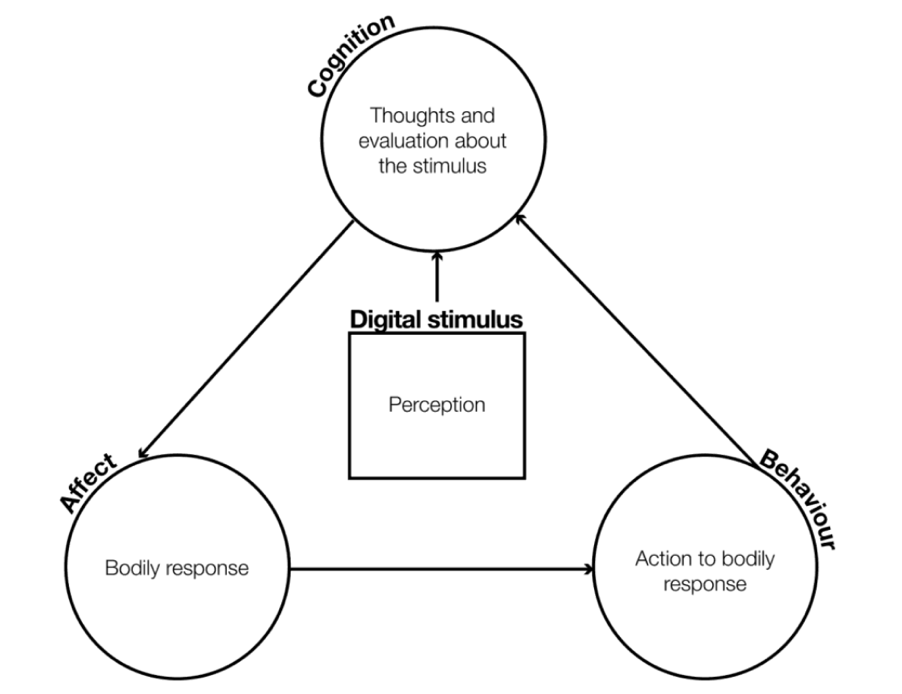
The importance of continuous change management
One of the most important predictors of a company’s commercial success is implementing a change management system based on a continuous approach. The use of temporary or seasonal adjustments to a company’s overall vector is a counterproductive measure that negatively affects the stability of a company’s corporate values. It is noteworthy that change management is not strictly a system function of a company in the digital age. Only a few companies have a special department that regulates this vector of professional development, while most companies manage without it. On the contrary, change management is adaptive and is more of a characteristic of the corporate culture of the entire firm rather than a separate direction.
A Culture of digital transformation
Change management is particularly relevant to enable digital transformation in the enterprise. More companies are coming to grips with the need to implement computerized technology onsite. Accountants, HR managers, security officers, and analytics departments are becoming vitally dependent on digital automation processes, which means change management must keep pace with this transformation. A core of these strategies is recognizing the economic benefits of using automated systems. It has been shown that 74% of companies plan to invest in digital technology development for HR departments to improve workforce strategies (Staley, 2020). The use of holistic management systems plays an important role, so company leaders mainly support their development. Companies are actively investing in the company’s L&D vector, literally allowing learning from the data they have and using the results of that learning to evolve. Change management in the digital age includes the private practice of L&D, which has become increasingly popular in recent years.
A critical area of L&D for a company in the digital age is to support the digital culture of employees. Most employees already have experience with computers, but the evolving world of technology creates new challenges for individuals, from working in new software to using innovative computer tools. Employee training is critical in this context because, as part of a culture of change management, it helps keep the overall pace of the company’s commercial development and maintain competitiveness.
Compliance with the pace of digital transformation
An essential question throughout the study was to determine whether the change management methodology can keep up with the pace of overall digitalization. The pace of technological development is indeed exponential, with company leaders often failing to be proactive. Most of the measures taken, whether it is employee training or profound integrative digitalization, are lagging. About 30 percent of all companies have been shown to completely overhaul their business models or make significant adjustments to current ones to keep up with the pace of digital development (Shirer, 2020). This includes recognizing the critical importance of employees as a critical resource for any company. One such initiative is changing the structure of the workforce. Figure 10 details survey results showing that most enterprise departments plan to increase the number of employees by at least 2 percent to accelerate the launch of digital transformation initiatives.
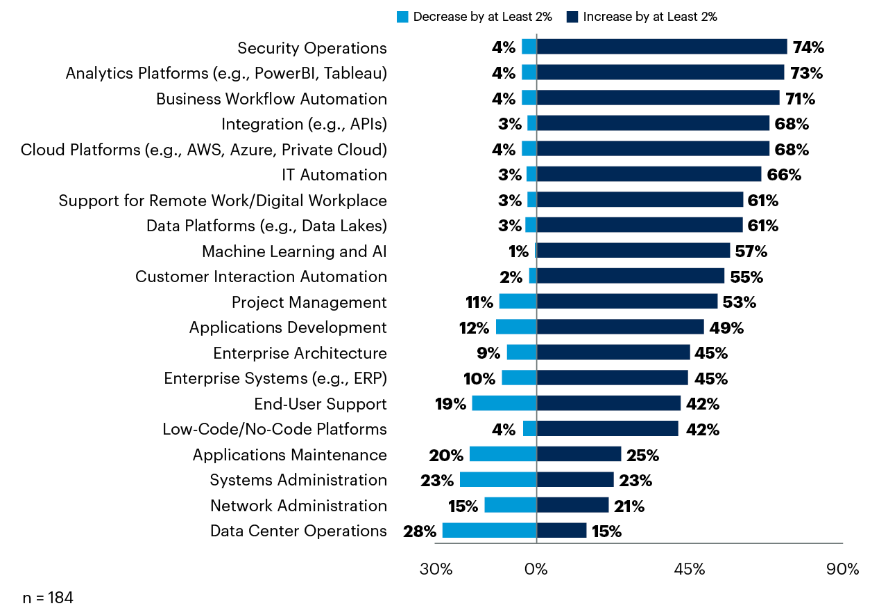
The importance of strategic partnerships
Another pattern discovered was the tendency of companies to implement strategic partnerships to achieve short- or long-term benefits. This type of partnership allows for mutually beneficial cooperation agreements in which companies, among others, exchange commercially important experience and knowledge. From the point of view of change management, this is a critical experiment that gives the two companies a foundation for remote cooperation and clarification of the common vector of development. However, not all companies are ready for such risks, and it has been shown that one in two CEOs is skeptical of this format (Higgins, 2020). This supports the finding that companies are lagging behind the pace of digital transformation.
Recommendations for companies based on results
The findings create a pool of three critical guiding strategies that companies can use to match the pace of digital transformation better. First, recognizing employees as a company’s most important strategic resource is vital. It is suggested to invest in HRM technology development to manage talent more intelligently, such as the one shown in Figure 11. It is essential to certainly recognize that in a world of technology variables, employees remain a comparable constant, and it is in them that resources and attention must be invested first, rather than chasing the best computer hardware on the market. In this approach, leaders must possess comprehensive traits and deserve the trust of subordinates. Figure 12 reflects the general traits that Mihalcea (2017) believes can contribute to achieving the intended goals. Specific methods necessarily include training, leadership coaching, and automatic measurement of KPIs.

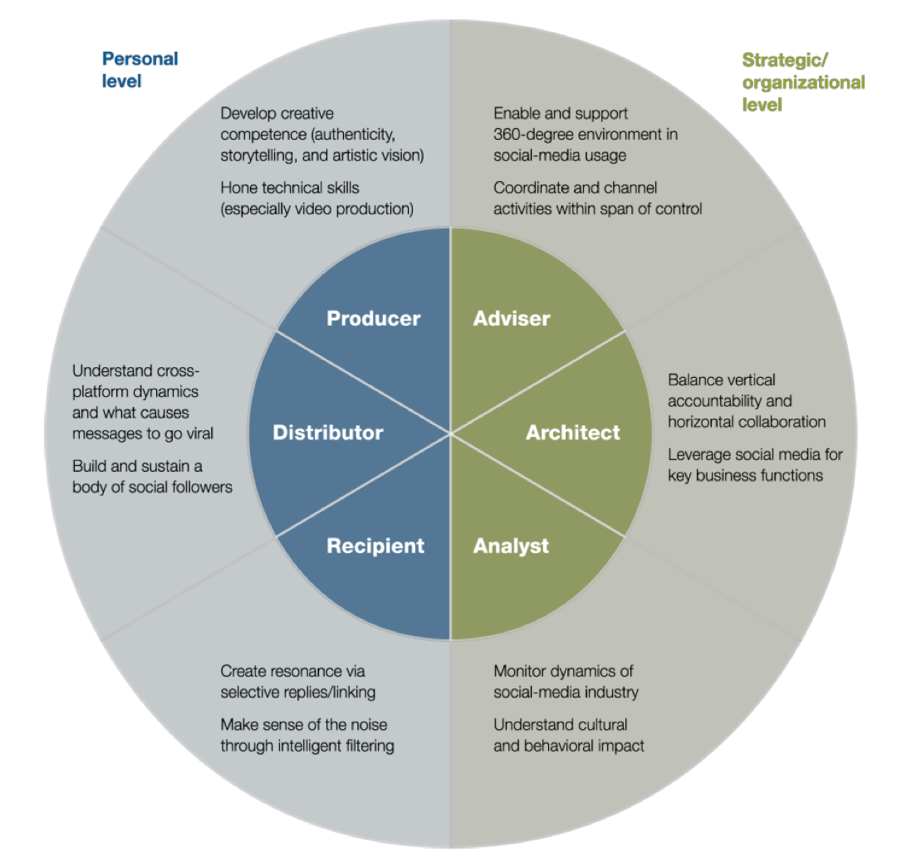
The second recommendation is the need to evaluate one’s company for technical equipment critically. It is unacceptable to leave technical immaturity and allow employees to work on outdated equipment, which has a disruptive effect on all production. The help of the audit is advisory for an independent assessment of the current technological state of enterprises and the formation of a list of digital products required for modernization. Relying only on the director’s opinion and buying technology only for specific departments is not a constructive idea, as this leads to conflicts and overbalances the corporate balance. The third and final recommendation is the need to recognize the criticality of change at the corporate level. A company aimed at transforming itself in the digital age, a company that wants to remain competitive, should implement a commitment to innovation and change at the employee mindset level. Particular attention to this recommendation should be paid to ADKAR’s theory of change management, which postulates the need to focus on the sides of production behind the changes (Rotich and Wanyoike, 2018). It is essential to systematically recognize that adequate change is the new norm for work practice.
Conclusion
Change management is a critical strategy for companies in this era of digital transformation. Today’s marketplace is dynamic and rapidly changing, especially in the face of pressuring competition. Change management is part of a corporate culture that recognizes the importance of transformation and the need to adapt to it, not only in keeping up with the pace of digital transformation but in a proactive manner. Operational efficiency, improved customer interactions, and improved profitability are the results of quality enterprise change management. That said, most companies are failing to keep up with the pace and keep up with the changes of the digital world. Aspects such as the need for strategic collaboration, recognition of employee value, and the criticality of technology upgrades are often ignored by executives, ultimately impacting the company’s competitive edge.
Reference List
Ahmad, M.H., Ismail, S., Rani, W.N.M.W.M. and Wahab, M.H. (2017) ‘Trust in management, communication and organizational commitment: factors influencing readiness for change management in organization,’ AIP Conference Proceedings, 1891(1), pp. 1-19.
Aubakirov, E.N. and Adayeva, G.A. (2021) ‘The concept of labor in the history of social thought,’ Bulletin of LN Gumilev Eurasian National University. Series: Historical Sciences. Philosophy. Religious Studies, 2(135), pp. 91-99.
Christopher, L. (2017) ‘Change management and addressing barriers to improvement’, in Yener, B., Karen, M., and Christopher, B. (eds.) Big Book of Emergency Department Psychiatry. New York: Productivity Press, pp. 339-344.
Conti-Brown, P. and Wishnick, D.A. (2020) ‘Technocratic pragmatism, bureaucratic expertise, and the federal reserve,’ Yale LJ, 130, pp. 636-706.
Costello, K. (2021) Gartner Survey Reveals Over Half of CIOs plan to increase full-time employees in IT to accelerate digital initiatives in 2021.
Crockett, Z. (2019) Why is airport food so expensive?
de Vasconcellos, S.L., Garrido, I.L. and Parente, R.C. (2019) ‘Organizational creativity as a crucial resource for building international business competence,’ International Business Review, 28(3), pp. 438-449.
Ebert, P. and Freibichler, W. (2017) ‘Nudge management: applying behavioral science to increase knowledge worker productivity,’ Journal of organization Design, 6(1), pp. 1-6.
El Shoubaki, A., Laguir, I. and Den Besten, M. (2019) ‘Human capital and SME growth: the mediating role of reasons to start a business,’ Small Business Economics, pp.1-15.
Essling, C., Koenen, J. and Peukert, C. (2017) ‘Competition for attention in the digital age: the case of single releases in the recorded music industry,’ Information Economics and Policy, 40, pp.26-40.
Flemming, B.E. (2020) ‘Organizational triangulation and leadership pluralism: the audacity of innovation,’ International Journal of Business Marketing and Management, 5(3), pp. 94-104.
Galli, B.J. (2018) ‘Change management models: A comparative analysis and concerns,’ IEEE Engineering Management Review, 46(3), pp. 124-132.
Gaskell, A. (2016) Becoming a data driven organization.
Georgiadou, A., Mouzakitis, S. and Askounis, D. (2021) ‘Working from home during COVID-19 crisis: a cyber security culture assessment survey,’ Security Journal, pp.1-20.
Ghimire, A., Thapa, S., Jha, A.K., Adhikari, S. and Kumar, A. (2020) ‘Accelerating business growth with big data and artificial intelligence,’ 2020 Fourth International Conference on I-SMAC, pp. 441-448.
Golovchinsky, E.E., Shakhovskaya, L.S., Korotkevich, A.I. And Lysiakova, M.V. (2018) ‘Intellectual resource as a key resource of entrepreneurial activity in the structure of assessment of the national economy’s intellectual activity: theory and methodology of research,’ Revista ESPACIOS, 39(28), pp. 1-9.
Hanna, N. (2018) ‘A role for the state in the digital age,’ Journal of Innovation and Entrepreneurship, 7(1), pp. 1-16.
Heffron, K. (2020) Gain a better understanding.Web.
Heyward, C. (2020) The growing importance of social responsibility in business.
Hicks, M. (2019) ‘Why the urgency of digital transformation is hurting the digital workplace,’ Strategic HR Review, 18(1), pp. 34-35.
Higgins, D. (2020) Four essential ingredients of successful ecosystem partnerships.
Hussain, S.T., Lei, S., Akram, T., Haider, M.J., Hussain, S.H. and Ali, M. (2018) ‘Kurt Lewin’s change model: a critical review of the role of leadership and employee involvement in organizational change,’ Journal of Innovation & Knowledge, 3(3), pp. 123-127.
Hwang, J., Cho, S.B. and Kim, W. (2019) ‘Philanthropic corporate social responsibility, consumer attitudes, brand preference, and customer citizenship behavior: older adult employment as a moderator,’ Social Behavior and Personality: An International Journal, 47(7), pp. 1-10.
IMB (2020) How smarter businesses transform in an uncertain world.
Johnson, S.L., Madole, J.W. and Freeman, M.A. (2018) ‘Mania risk and entrepreneurship: Overlapping personality traits,’ Academy of Management Perspectives, 32(2), pp. 207-227.
Kane, G. (2017) Digital transformation’ is a misnomer.
Khan, S.T., Raza, S.S. and George, S. (2017) ‘Resistance to change in organizations: a case of general motors and nokia,’ International Journal of Research in Management, Economics and Commerce, 7(1), pp. 16-25.
KPMG (2020) Everything changed. Or did it?
McKibbin, W. and Fernando, R. (2020) ‘The economic impact of COVID-19,’ Economics in the Time of COVID-19, 45(10.1162), pp. 45-52.
McKinsey (2020) How COVID-19 has pushed companies over the technology tipping point—and transformed business forever.
Mehrolia, S., Alagarsamy, S. and Solaikutty, V.M. (2021) ‘Customers response to online food delivery services during COVID‐19 outbreak using binary logistic regression,’ International Journal of Consumer Studies, 45(3), pp. 396-408.
Mihalcea, A. (2017) ‘Employer branding and talent management in the digital age.’ Management Dynamics in the Knowledge Economy, 5(2), pp. 289-306.
Minevich, M. (2021) What is the social responsibility of big tech? An American lesson from 2020.
Mohamed, A. (2020) The risks and rewards of a corporate social justice culture.
Moriuchi, E. (2021) Cross-cultural social media marketing: bridging across cultural differences. Bingley: Emerald Group Publishing.
Mugge, P., Abbu, H., Michaelis, T.L., Kwiatkowski, A. and Gudergan, G. (2020) ‘Patterns of digitization: A practical guide to digital transformation,’ Research-Technology Management, 63(2), pp. 27-35.
Muller, C. (2021) The pros and cons of socially responsible investing.
Newman, D. (2021) ‘Honesty, transparency and data collection: improving customer trust and loyalty,’ IQ: The RIM Quarterly, 37(2), pp. 44-47.
Nicas, J. (2021) Apple’s iPhones will include new tools to flag child sexual abuse.
Nwinyokpugi, P. (2018) ‘Organizational change management and employees productivity in the Nigeria banking sector,’ IOSR Journal of Business and Management, 20(1), pp. 11-20.
Perkins, B. (2018) What is change management? A guide to organizational transformation.
Peslak, A. and Hunsinger, D.S. (2019) ‘What is cybersecurity and what cybersecurity skills are employers seeking,’ Issues in Information Systems, 20(2), pp. 62-72.
Prosci (2020) Why change management.
PTC. (2020) Digital transformation report by corporate leaders and PTC.
Raj, M. and Seamans, R. (2018) ‘Artificial intelligence, labor, productivity, and the need for firm-level data. In Agrawal, A., Gans, J., and Goldfarb, A. (eds.) The economics of artificial intelligence: An agenda. Chicago: University of Chicago Press, pp. 553-565.
Rataul, P., Tisch, D.G. and Zámborský, P. (2018) Netflix: dynamic capabilities for global success. New York: SAGE Publications.
Remeikienė, R., Belas, J., Klieštik, T. and Smrčka, L. (2020) ‘Quantitative assessment of dynamics of economic development in the countries of the European Union,’ Technological and Economic Development of Economy, 26(4), 933-946.
Rotich, A.K. and Wanyoike, R. (2018) Organizational transformation and performance of Kengen Company Limited, Kenya.
Schwertner, K. (2017) ‘Digital transformation of business,’ Trakia Journal of Sciences, 15(1), pp. 388-393.
Sharma, J.K. and Kurien, D. (2017) ‘Perceived risk in e-commerce: a demographic perspective,’ NMIMS Management Review, 34(1), pp.31-57.
Shirer, M. (2020) IDC reveals 2021 worldwide digital transformation predictions; 65% of global GDP digitized by 2022, driving over $6.8 trillion of direct dx investments from 2020 to 2023. Web.
Staley, D. (2020) PwC’s HR Technology Survey 2020.
Stoll, J. (2021) Netflix subscribers count worldwide 2013-2021.
Sukoharsono, E.G., Widhianingrum, P. and Purba, A.S. (2021) ‘Constructing a hierarchical pyramid of corporate social responsibility: a model from legal and economic to spiritual obligation,’ The International Journal of Accounting and Business Society, 29(1), pp. 169-196.
Urevig, A. (2021) 21 reasons to start a business today. Web.
van Eerd, R. (2020) Jobs will be very different in 10 years. Here’s how to prepare.
Varia, M. (2021) Apple can scan your photos for child abuse and still protect your privacy – if the company keeps its promises. Web.
Varon, L. (2021) Change management process: a conclusive guide.
Vial, G. (2019) ‘Understanding digital transformation: a review and a research agenda,’ The Journal of Strategic Information Systems, 28(2), pp. 118-144.
WEF (2016) Identifying value at stake for society and industry.
Wen-Jun, X.U.E. (2019) ‘Understanding Change management is essential for information systems development and implementation in the 21st century,’ DEStech Transactions on Social Science, Education and Human Science, 4, pp. 1-4.
Wood, L. (2020) The world’s digital transformation industry 2020-2025: trends, opportunities and competitive landscape.
World Bank (2018) World development report 2019: the changing nature of work.
Wrigley, C. and Straker, K. (2019) Affected: emotionally engaging customers in the digital age. New York: John Wiley & Sons.